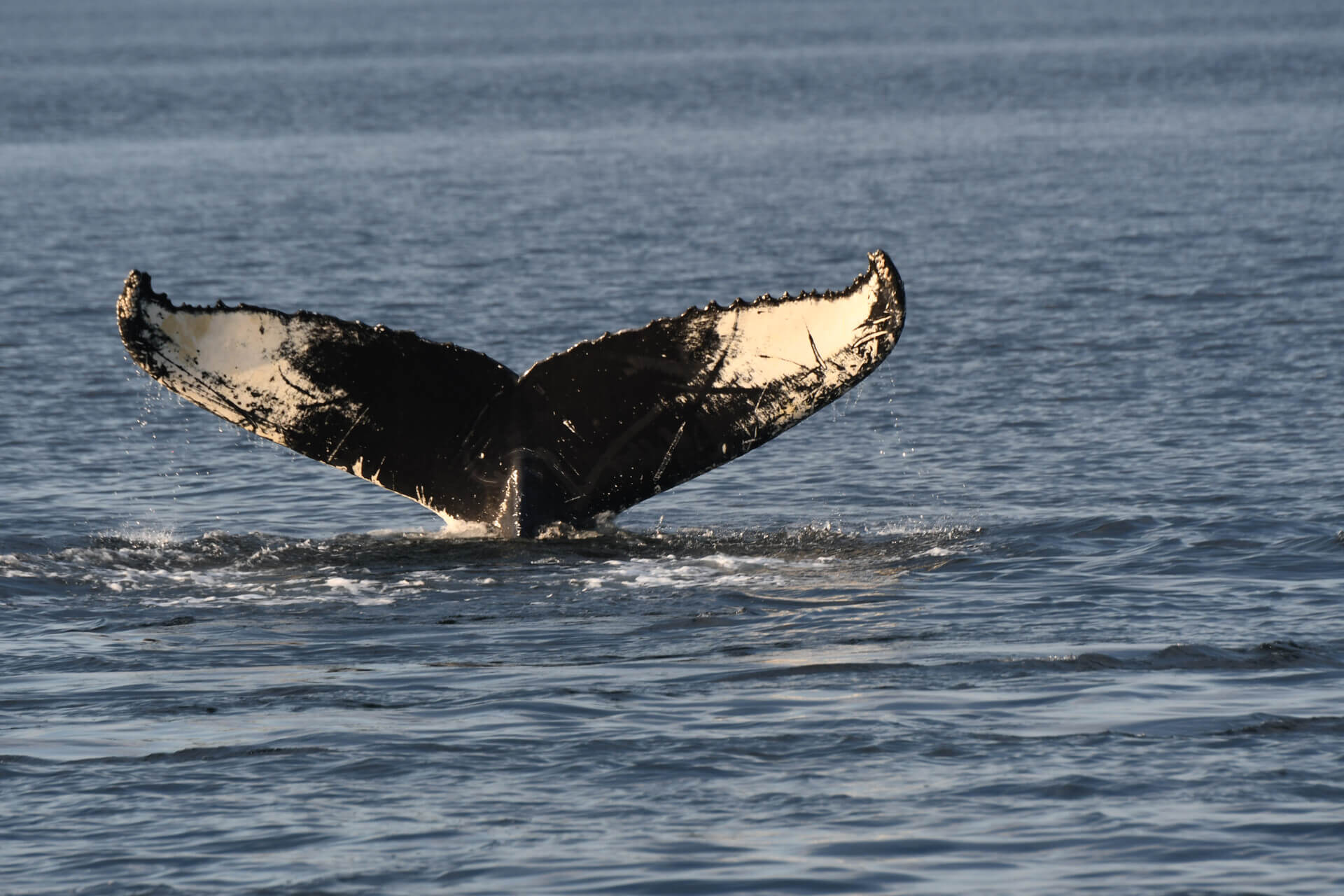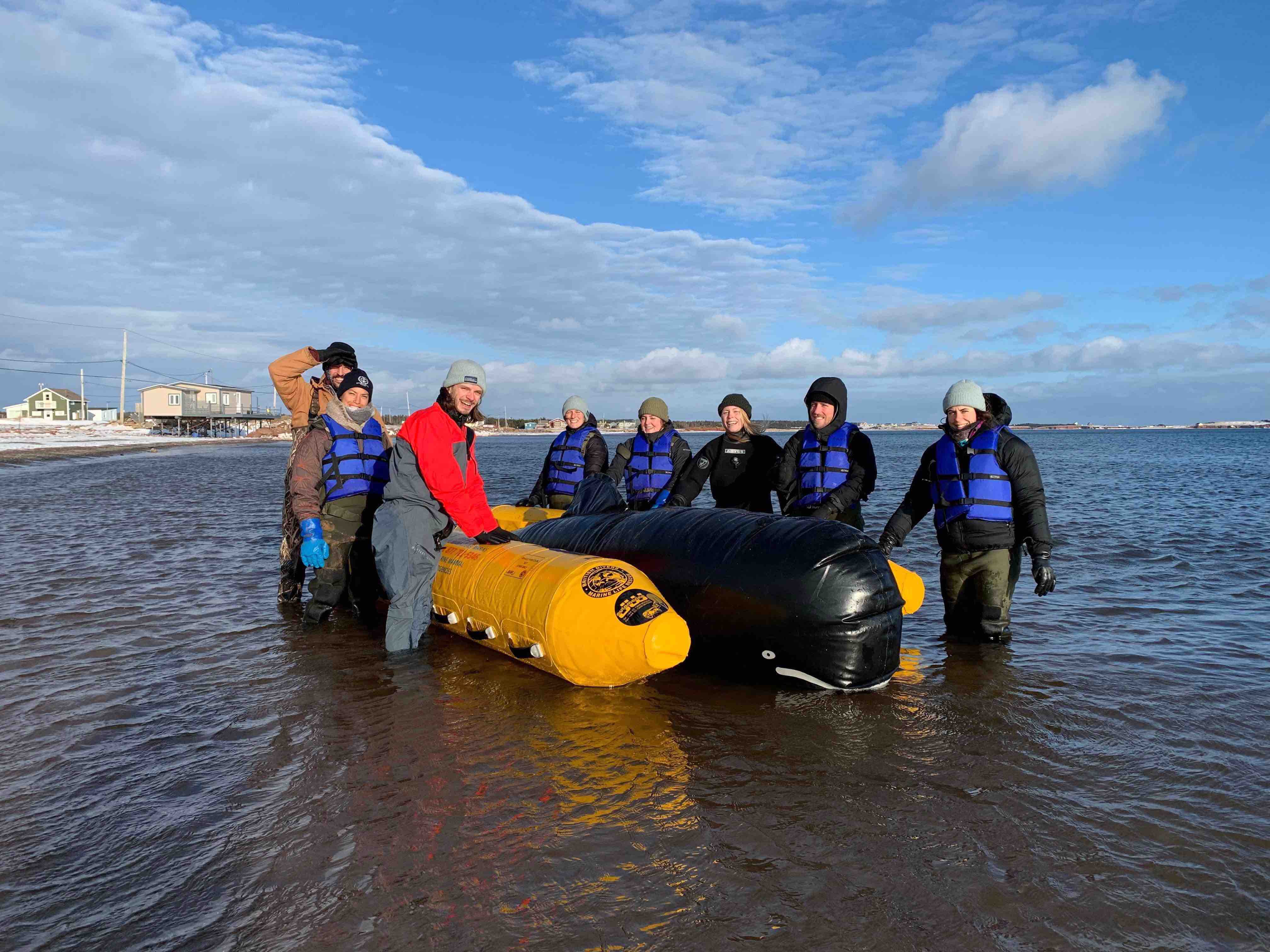A kayaker was the first to report a beluga carcass when he contacted the media yesterday morning, July 17. Marine Mammal Emergencies was subsequently informed, but details were vague. The carcass was in the vicinity of Cap au Corbeau, east of Bic National Park. A volunteer quickly set out to validate the situation; after nearly four hours travelling along the shoreline and the rocky cliffs of the area, she was forced to give up: the carcass could not be found. Fortunately, early that evening, it was reported again by another kayaker who had spotted it earlier in the afternoon. From the looks of her photographs, it was indeed an adult beluga carcass whose state of decomposition was quite advanced. Newly motivated, the volunteer returned to the site, which was a small beach accessible only at low tide. In collaboration with the Université de Montréal’s faculty of veterinary medicine (FMV) and the St. Lawrence National Institute of Ecotoxicology, the carcass was sampled: pieces of skin, fat and muscle were taken for genetic and toxicological analysis, and half of the lower jaw was removed to determine the age of this beluga (article in French). It was a female measuring 3.66 m.

This is the fifth beluga carcass studied this year. Two of these carcasses have been transported to the FMV. Both were females. One was lactating and is believed to have given birth last year according to the conclusions of veterinarian Stéphane Lair, while the second one was also a lactating female that probably calved a few weeks earlier, judging by the size of her uterus.
Every year, some 15 or so belugas are found on the shores of the St. Lawrence. Examination of these carcasses has revealed unusual health problems in the belugas of the St. Lawrence. Based on analysis of the 222 belugas examined between 1983 and 2012, it was determined that the most frequent causes of mortality in young belugas are infectious diseases of parasitic origin (32%), in particular verminous pneumonia. Infectious diseases of bacterial origin as well as cancers, especially those of the digestive system, are believed to be the main causes of mortality in adult belugas. In 2010 and 2012, other factors are thought to have reduced young belugas’ chances of survival. This period coincides with a period of significant changes in terms of their prey, reduced ice cover in winter and higher water temperatures. In parallel, an increase in the number of females dying from birth-related complications (15%) has been observed since 2010, which suggests a problem related to reproduction.





